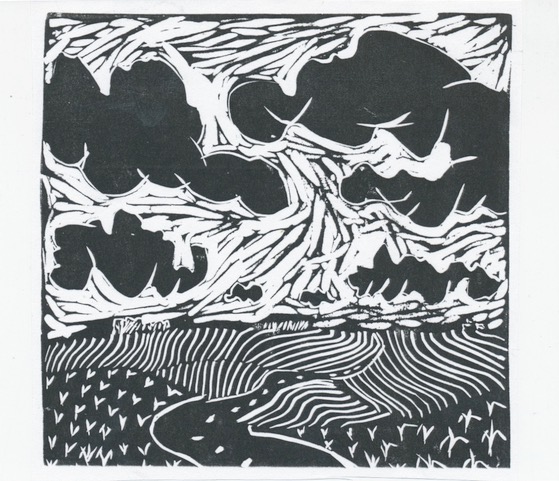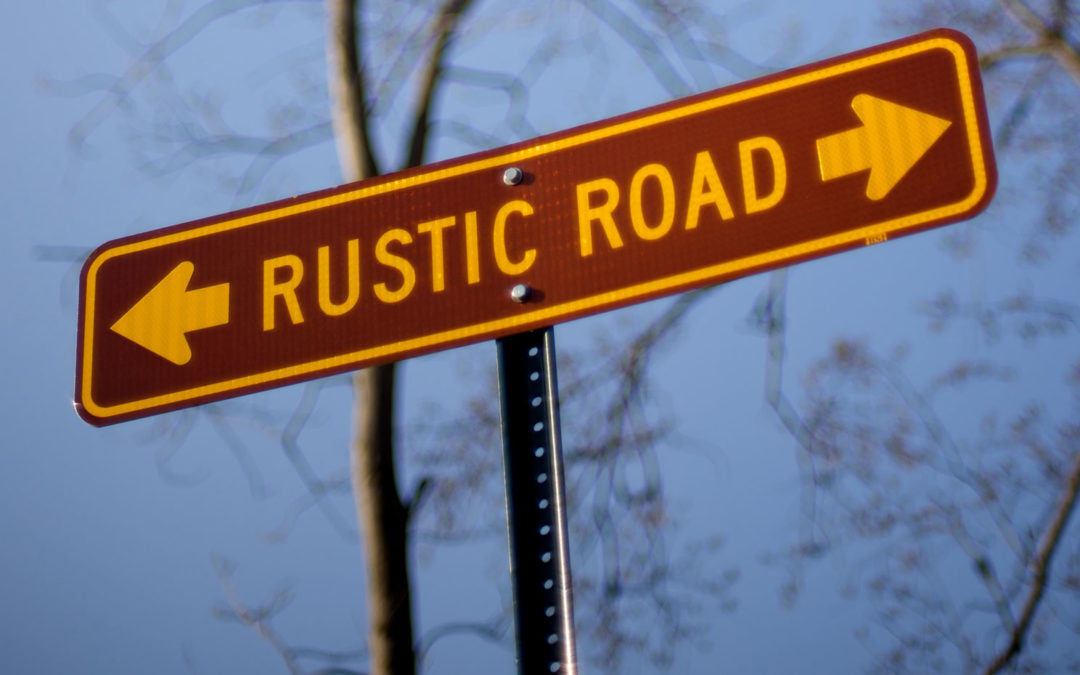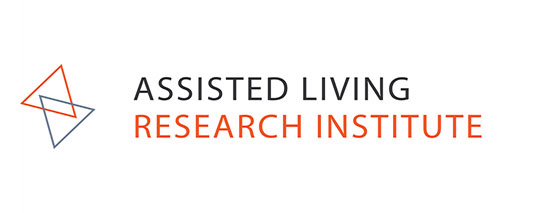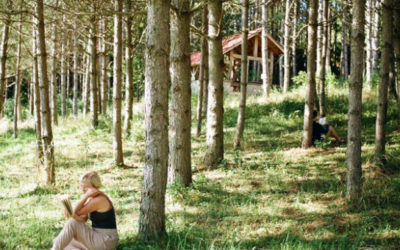In his book, Building The Agricultural City—A Handbook For Rural Renewal, Robert Wolf asks the question:
“Is there a means by which we can construct a society in which the human being is central, not peripheral, with an economy that serves us? One in which it is understood that Nature has tolerance limits and that by crossing them too often we will destroy the foundations of our existence? Can we construct a society in which work is meaningful? One in which our voices are heard? “
The slim volume lays out the framework and makes an argument for building “agricultural cities” by way of strong regional economies. While Wolf is primarily focused on the area he calls home— the “Driftless” region of the upper Midwest encompassing Northwestern Illinois, Northeastern Iowa, Southwestern Wisconsin, and Southeastern Minnesota— the concept can be applied to any regional economy.
Arguing that the global economy has fragmented our communities as rural America and its people have been treated as “third world countries” (extracting natural resources without commitment to the people and economies that live in these regions), Wolf suggests that regionalism can serve as a counter-balance to the interests of large and powerful influences of multi-national corporations. Building The Agricultural City sets out to help walk us through an alternative vision: one that places people and our natural surroundings at the heart of our societies and economies.

PROLOGUE
The Driftless Region
I am standing on a ridge in the Driftless region of the American Midwest. From this ridge I can see land rolling to the horizon for miles around.This is farmland, and the hills are dotted every quarter of a mile with a cluster of buildings—a barn, a silo, a white house. Each spring the earth is plowed into contoured strips that follow the curve of the hills. The fields are lined with hedgerows that provide shelter and habitat for rabbits, pheasants and a dozen more birds and small mammals. It is now high summer. The contoured strips are covered with alternating strips of yellow corn and green alfalfa. Above, on the blue sky, drift puffs of clouds.
The Driftless is a region, roughly the size of Massachusetts, covering parts of four contiguous states cut through by the Mississippi: Iowa, Minnesota, Wisconsin, and Illinois. It is a land of rolling hills and winding valleys. The land sings, it is beautiful, and seeing it from this ridge I know that I live within a great garden tended by farmers, and it is to its people that I am writing, for they need to be reminded of how their forebears once provided for their own needs.
A hundred and fifty-some years ago this was a, self-reliant and largely self-sufficient region. Its people, separated by great distances from the centers of production, needed to supply their own food and goods. They could not wait for flour to be shipped from Chicago or lumber from Eau Claire. They needed to manufacture their own clothes, mill their own lumber, wool, and flour. To take but one example, in 1880 the four northeastern-most Iowa counties had a total of 80 mills—gristmills, woolen mills, lumber mills. Today, in 2016, there are none.
When clam beds were discovered in the Upper Mississippi in the late nineteenth century, clamming became a major industry in Driftless river towns. Button factories were established in several, including Lansing, Iowa and Prairie du Chien, Wisconscin. There blanks were cut from shells and buttons made from the blanks. Twenty thousand men were said to be clamming on the Mississippi and its tributaries in the summer of 1902. Even more men came the next spring, but the beds had been over harvested and the take was considerably smaller. From then on, the industry declined, but commercial fishing took its place.
Carp and buffalo were the main species of commercial fish. Each year, thousands of pounds of carp were put on ice and shipped by freight train to New York for the Jewish market.
Before commercial fishing, almost everyone fished. Mr. Henry Canfield of La Crosse told one writer that “All river folks, including boatmen, lumberjacks, raftsmen, adjacent farmers, and nearby townsmen, caught and used fish in quantities. Fish were plentiful all along the rivers.”
Houses, mills, retail stores and banks were built from local lumber or from limestone blocks quarried here in the Driftless.
People made and raised what they could. Farm women tended gardens and canned vegetables and meat. They made dresses from flour sacks. Towns people and river people, without radios, televisions, movies and records, held dances where they made their own music.
Today, country dances, even town dances, with home-made music are a rarity. Few people raise vegetables and fewer can or freeze them. Aside from a handful of commercial fishermen, the fishing industry is gone, along with the clamming and button industry and mills. The region has few manufacturing plants and imports most of its food and goods. Agribusiness aside, the Driftless is a service economy, which accounts for its poverty and the out-migration of its youth..
A century ago, every eight or so miles along the highways that crisscross this land of farmsteads lay a village of one hundred or a thousand folk. Since the mechanization of farming and the consequent dwindling of farm numbers, many hamlets have shriveled or disappeared. The towns that survive are now usually about sixteen miles apart. Still, this is agrarian society at its best. Its members aid one another in times of illness or disaster. When someone here is ravaged by cancer and has not the money for surgery and treatment, auctions are held and collections taken up.
When a tornado came through one year and took down a giant Norwegian pine that landed alongside the back of our house, knocked down a chimney and tore up the roof, and then moved a quarter mile and flattened a neighbor’s barn, neighboring farmers arrived at 2 a.m. with chainsaws and skid loaders to cut through beams and release trapped and wounded animals. The next morning three of those farmers came to our house and cut the fallen pine into logs and rounds and loaded them onto pickups and hauled them off.
Their fathers had worked the same land and had lived and worked cooperatively, the men with threshing and woodcutting, the women with quilt making. This is the image of this region at its most welcoming. But as everyone who has driven through the region knows, many of its towns are rife with empty storefronts. Farm auction notices are posted on café bulletin boards. Villages and towns that once boasted a Saturday night band concert in the town square while farm families shopped and socialized are nearly lifeless.
Many people hope to revitalize their towns by proposing bike trails, or the Main Street program, or something else, but are frequently opposed by a chorus or townsfolk who want “to keep things the way they are.” This, of course, is a recipe for further decline. When stores close and school enrollment dwindles, that is change. And while the conservative townsfolk ruefully acknowledge this change, they very often oppose the remedial solutions which have been effective elsewhere. Can anything be done?
The Agricultural City
The title for this book was inspired by the phrase “agricultural city,” coined by Chicago architect Joe Lambke. Joe used the phrase in the title of a pamphlet which described his vision of a possible future for northeast Iowa. In Joe’s vision, the towns and villages of this four-county rural area in northeast Iowa would be considered as nodes of population within one unit—an agricultural city. Unlike the cities we habitually envision, this one would be comprised primarily of farmland, with agriculture the glue that bound cities, villages, towns and farms together.
I learned about Joe in the early 1990s when I was pondering the problem of rural economic development. I discussed it with Bill Burke, the city planner for Waukon, Iowa, and told him of my own vision for regional development. Bill then mentioned Joe and told me that Joe had submitted a proposal to ten northeast Iowa towns for cooperative economic development. He gave me a copy of the proposal.
I called Joe and we met, many times, in Chicago and in northeast Iowa. But eventually we lost touch. Joe went on to design furniture and buildings, but the notion of an agricultural city stayed with me, and in 1994 I wrote a six-part editorial for Iowa Public Radio, “Developing Regional, Rural Economies.” This won the Sigma Delta Chi Award and Bronze Medal from the Society of Professional Journalists for Best Radio Editorial of the year. The Des Moines Register reprinted it one Sunday for their lead editorial, and that, as far as the public was concerned, was pretty much the end of it.
But I continued pondering how a cluster of cities might collaborate; my ideas are sketched in chapter one of part two. Here it is enough to say that I envisioned several Agricultural Cities in Iowa, in Wisconsin, and in Minnesota, but only one in the small portion of northwest Illinois’ that is in the Driftless.
For the next decade I continued to write and publish essays on regionalism and conducted and published two regional surveys. None of these efforts attracted much more notice than a corpse in a funeral home.
The End of a World
Lewis Mumford coined the apt phrase “Power Complex,” indicating the convergent forces in government, industry, finance, and military that control our society. But the Power Complex, as increasing numbers of people see, is in its last years, and unless sufficient numbers of people can agree on what a sustainable culture might look like, and begin working to achieve it, chaos and violence will follow the approaching collapse.
The desire for unlimited control, which is the goal of the Power Complex, is a telling instance of rigidity: it is persistent and undeviating. It has an autonomous life, for as one set of leaders retires or dies, another set—a virtual carbon copy—replaces it. The Power Complex is rigid in its dogma of free trade and unrestrained competition. Everyone everywhere must see things as it does. If not, it will force compliance, as John Perkins testified in Confessions of an Economic Hit Man. A healthy society is defined in part by its ability to make self-corrective measures; whereas dogmatism and the desire for total control are forms of rigidity, and rigidity is a sign of death.
Conversely, flexibility and adaptability are signs of life and health. As the seventy-sixth verse of the Tao Teh Ching says, “When living, man is supple and yielding; when dead, man is hard and stiff. When living, all animals and plants are soft and pliant; when dead, they are withered and brittle. Thus, being inflexible and unyielding is part of dying; being flexible and yielding is part of living.” Like a belief system before it dies, a civilization rigidifies as it atrophies: dominant beliefs become dogma, and the civilization becomes incapable of adapting to change, incapable of self-corrective, rectifying measures.
The great internal contradiction within the Power Complex is that since it has lost its manufacturing base, since its financial empire is built upon mere speculation, and since the United States government is deeply in debt, the search for total world control is illusory. Worse, it is delusional.
Regionalism and Possibility
A new world, now in embryo, is struggling to be born. Human scale communities and human scale sustainable institutions are arising around the planet, and they are arising in reaction to the inhumanity and self-destructive tendencies of the present system.
As of this writing small community discussion groups on various facets of community sustainability are meeting regularly in cities as well as rural towns. People across the country from all walks of life now share an increased sense of the urgency with which their locality, their region, must become more self-reliant, more self-sufficient. They may seldom articulate exactly what needs doing, but they know that our present system is falling apart.
Over the past few years increasing numbers of people have been promoting local food systems, local energy production, and community development banks as means by which to restrict the reach of transnational corporations and large urban banks into every corner of our economic and cultural life. They are understood to be a means by which to retain more dollars within local economies. Now what some people are coming to realize is that local strategies for economic sustainability can be applied on a regional level.
Sections, Regions and Bioregions
Once upon a time the United States was a quiltwork of distinct regions. For example, Colonial New England’s democratic character was shaped by its Congregational churches, in which the congregants of each church formed that church’s governing body. The churches also served as town meeting halls, where local affairs were decided. The coastal South, on the other hand, settled by Anglicans, was hardly as democratic. Both the Chesapeake Bay and Carolina coastal regions were hierarchical, with slaves at the bottom and wealthy planters at the top and yeomen farmers and poor whites in between.
Large-scale, easy-to-spot distinctions between Colonial New England and the coastal South are as clear as the differences between each of them contrasted with the Middle West frontier or the Spanish Southwest. The regionalization of the United States exists now only as an imaginative possibility, but for several hundred years it existed in fact.
Regions lack strict definition since they are creations of natural forces and therefore lack definite boundaries. Regions blend into one another, in imperceptible degrees, as the agricultural land of the Midwest prairie yields to the Great Plains, and the plains in turn are transformed into desert. Within the last few decades, regions have been defined most commonly in terms of their geology and topography, their watersheds, their flora and fauna. When viewed in this perspective, Maine has more in common with Canada’s maritime provinces (New Brunswick, Nova Scotia, and Newfoundland) than with other New England states, while northern California, Oregon, Washington, and British Columbia share more features with each other than with their neighboring states and provinces. In fact, these Pacific Northwest entities are the subject of a pro-business separatist movement that would like to see them form into the independent nation of Cascadia.
The idea of an independent nation in the Northwest originated with Thomas Jefferson, who envisioned the “Republic of the Pacific.” According to one anonymous internet source, one of the goals of “’The Pacific Northwest Economic Region’ is to build a world class workforce to make the Pacific Northwest economic region competitive in worldwide markets . . .”
This view of regionalism is called bioregionalism, and I contend that harnessing the idea of a bioregion with the strategies of local economics is our only effective counter to globalization and the collapse of our economic system.
Centralization versus Decentralization
Some degree of centralization is needed to implement the most basic functions of a national economy and government. The United States, however, has concentrated finance and business in so few hands that studies by the Federal Reserve Bank of Minneapolis and economist Edward N. Wolff of New York University reveal that 35 per cent of the national wealth is held by 1 percent of the population. Centralization not only has consequences for the average man’s net worth, but for people’s perception of their power. Under excessive centralization, with its techniques for propaganda, citizens become accustomed to the status quo and forget that things were ever done, or could be done, differently.
As we have heard many times over, the Chinese character for “crisis” also means “opportunity.” The present collapse of our economy is a blessing in disguise. E.F. Schumacher advised us years ago to rethink our ideas of scale and to ponder the idea that in the economic and social spheres small is beautiful. I will add that only the relative smallness of a region will allow for the creation of a human-centered society, one that can nurture the individual to full development.
The establishment of decentralized regional economies and cultures is a prerequisite for the reestablishment of the human being at the center of society, not at the periphery, where we are at present. The following essays are intended to make the present state of affairs clear beyond question, and to offer hope in projects across the globe that have enhanced local and regional self-reliance and self-sufficiency. These projects include closed agricultural systems, energy and food cooperatives, the cooperatives of the Emilia Romagna region of Italy, the Grameen Bank of Bangladesh, the Bank of North Dakota, and more. These proven experiments could be harnessed to create thriving, self-reliant and self-sufficient regional economies that now seem beyond our dreams.
The Garden
I return again in thought to my Driftless region, as I do every day, wondering if it is possible for those of us who live here to overcome our egocentrism, our fear, our provincialism (“we’ll take care of our town, you look out for yours”), and our conservatism (“life was good when I was a kid, let’s keep it that way”).
In the past three decades Americans have become increasingly divided, while their leaders have become increasingly divisive. Regionalism is a constructive art, and when fragmentation is a culture’s driving force it is extremely difficult and often impossible for separate and conflicting interests to collaborate. The creation of just one regional economy and culture would involve hundreds perhaps thousands of small acts of cooperation and collaboration: it would involve the transformation of every function of the region’s economy and culture. Can this be accomplished when all the signs of a decayed structure surround us.
We have no choice but to try. If any rural region of America has a chance to minimize the suffering that the impending collapse of American society promises, it is the Driftless region. The Driftless can in truth become the veritable garden that appears when seen from a ridge top. But to rebuild that garden and create a quiltwork of agricultural cities within the Driftless, we must become unstuck in fear and denial. We must realize, like our forbears, that survival depends upon cooperation. And cooperation will come only when we see ourselves as Americans, not as Republicans or Democrats, as pro-gun or anti-gun, as pro-this or anti-that. But that time is coming in the Driftless region, where people thirty years ago dismissed my idea of a decentralized regional economy as simply crazy, are now recognizing it as our only hope for survival.
Paperback and e-book editions of Building The Agricultural City are available here.






